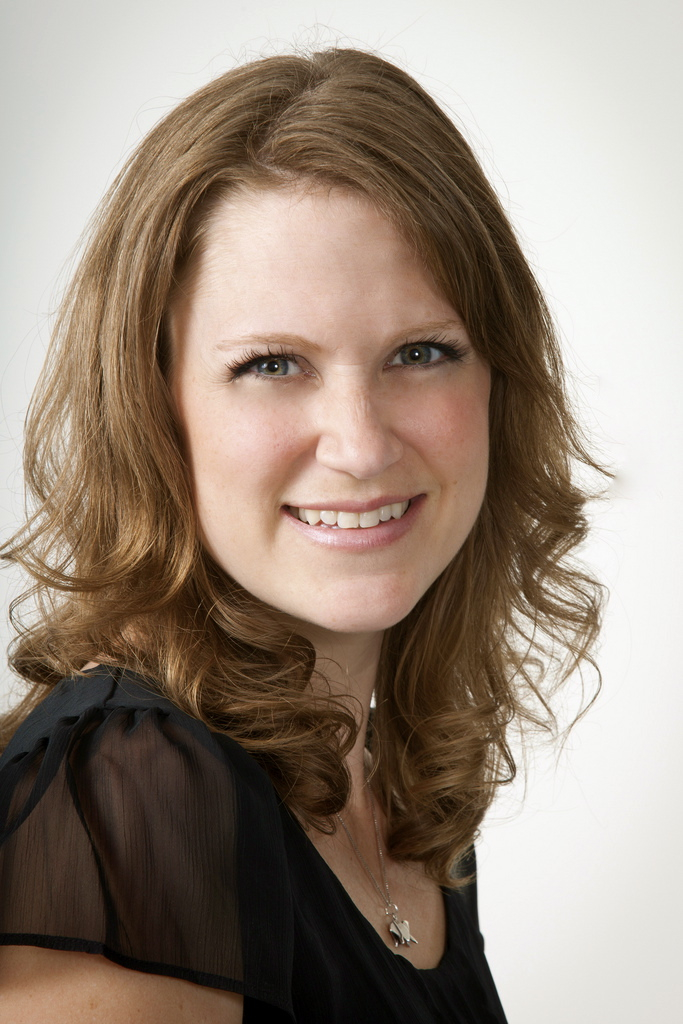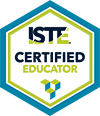


What’s next for artificial intelligence? Well, for now, it might be AI creating its own content. Generative adversarial networks (GANs) and generative re-trained transformers (GPTs) are new innovations that allows an AI to produce its own content. Humans can use AI to generate a list of possible brand names, a fictional story, an original work of art, or even a totally new human face. But who is really the creator? You, the AI, or the AI developer? And what happens when the tech is used to write fake news stories or create malicious deepfake videos? It’s important that students understand both the potential opportunities and impacts of using this new technology. By attending this session, educators will learn more about generative AI, its impacts, and how their students can harness their creativity to train and use generative AI to support their own media creations!
1. What is AI? What are GANs? (10 minutes) 2. What can AI do? Experimenting with generative AI tools to create art, music, images, and text. Examples of AI tools to be explored: Transformer/GPT-2, Deep Dream Generator, Prisma, DeepArt.io, Sway: Magic Dance, thispersondoesnotexist.com, Sketch-RNN, AI Duet, MuseNet, and AIartists.org. Attendees will consider curriculum integration entry points, cross-curricular applications, and student-created media potential. (60 minutes). 3. Potential opportunities and societal impacts of generative AI. (10 minutes) 4. Resources, Q&A, and next steps (10 minutes)
Black, N.B & Brooks-Young, S. (2020, 2021). Hands-On AI Projects for the Classroom series. (ISTE). Zimmerman, M. (2018). Teaching AI: Exploring New Frontiers for Learning (ISTE Book). AI4K12 Big Ideas, retrieved from https://bit.ly/ai4k12-five-big-ideas. Muro M., Maxim, R., & Whitno, J. (2019). Automation and Artificial Intelligence: How machines are affecting people and places. Retrieved from https://www.brookings.edu/research/automation-and-artificial-intelligence-how-machines-affect-people-and-places/. Lee, K. (2018). AI Super-Powers: China, Silicon Valley, and The New World Order. Houghton Mifflin Harcourt. Ford, M. (2018). Architects of Intelligence: The truth about AI from the people building it. Packt Publishing. Computational Thinking by Jeannette M. Wing; https://www.cs.cmu.edu/~15110-s13/Wing06-ct.pdf; Teaching Computational Thinking Is the First Step to Bridging STEM Skills Gap by Meghan Bogardus Cortez - https://edtechmagazine.com/k12/article/2016/11/teaching-computational-thinking-first-step-bridging-stem-skills-gap; Computational Thinking for Teacher Education
By Aman Yadav, Chris Stephenson, Hai Hong - https://cacm.acm.org/magazines/2017/4/215031-computational-thinking-for-teacher-education/fulltext; How to Teach Computational Thinking by Stephen Wolfram - http://blog.stephenwolfram.com/2016/09/how-to-teach-computational-thinking/ Logue, C. (2014). Design School 2.0:
Want to get students excited about STEM? Start an app design course. Retrieved from: http://www.scholastic.com/browse/article.jsp?id=3758416. Tomaszewsi, J. (2012). Students Learn App Development. boyd, d. (2014). It's Complicated: The Social Lives of Networked Teens. New Haven: Yale University Press. Berger, J. (1972). Richards, E. & Terkanian, D. (2013, December). Occupational employment projections to 2022. Monthly Labor Review, U.S. Bureau of Labor Statistics. Retrieved from https://www.bls.gov/opub/mlr/2013/article/occupational-employment-projections-to-2022.htm Change the Equation. (2015, December 7). The hidden half [blog]. Retrieved from http://changetheequation.org/blog/hidden-half Change the Equation. (2016, August 9). New data: Bridging the computer science access gap [blog]. Retrieved from http://changetheequation.org/blog/new-data-bridging-computer-science-access-gap-0 Cheryan, S., Plaut, V. C., Handron, C., and Hudson, L. (2013b). The stereotypical computer scientist: gendered media representations as a barrier to inclusion for women. Sex Roles 69, 58–71. Cheryan, S., Master, A., & Maltzoff, A. (2015). Cultural stereotypes as gatekeepers: increasing girls’ interest in computer science and engineering by diversifying stereotypes. Frontiers in Psychology, 6(49), 1-8. Google. (2015). Images of computer science: Perceptions among students, parents, and educators in the U.S. Retrieved from https://services.google.com/fh/files/misc/images-of-computer-science-report.pdf. Livingstone, S. (2009). On the mediation of everything: ICA presidential address 2008. Journal of communication, 59(1), 1-18. National Center for Women and Informational Technology. (2014). NCWIT scorecard: A report on the status of women in informational technology. Retrieved from https://www.ncwit.org/resources/ncwit-scorecard-report-status-women-information-technology National Science Board. (2016). Science and Engineering Indicators 2016. Arlington, VA: National Science Foundation (NSB-2016-1). Steinke, J., Lapinski, M. K., Crocker, N., Zietsman-Thomas, A., Williams, Y., Evergreen, S. H., & Kuchibhotla, S. (2007). Assessing media influences on middle School–Aged children's perceptions of women in science using the draw-A-scientist test (DAST). Science Communication, 29(1), 35-64. Weisbuch, M., Pauker, K., & Ambady, N. (2009). The subtle transmission of race bias via televised nonverbal behavior. Science 326, 1711–1714.